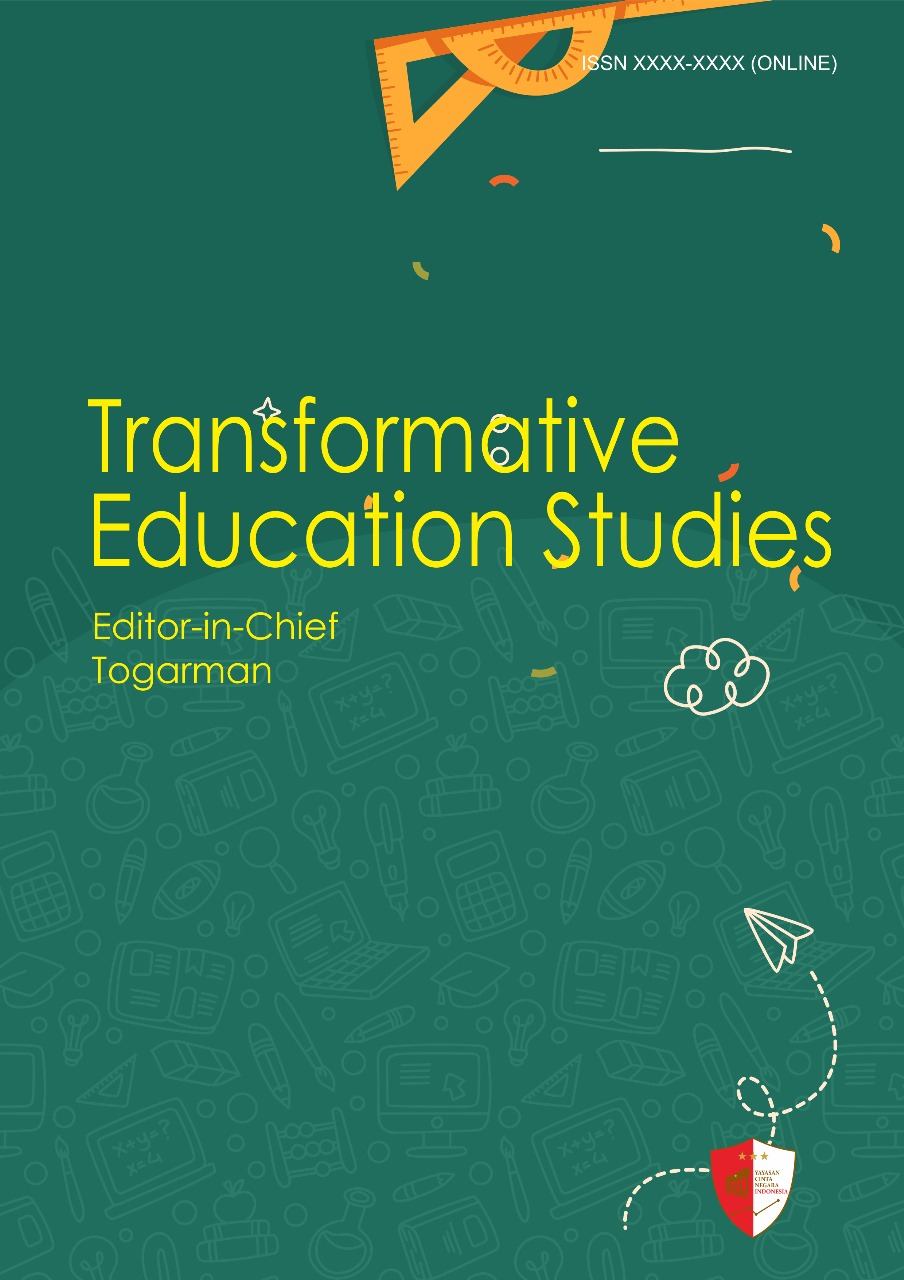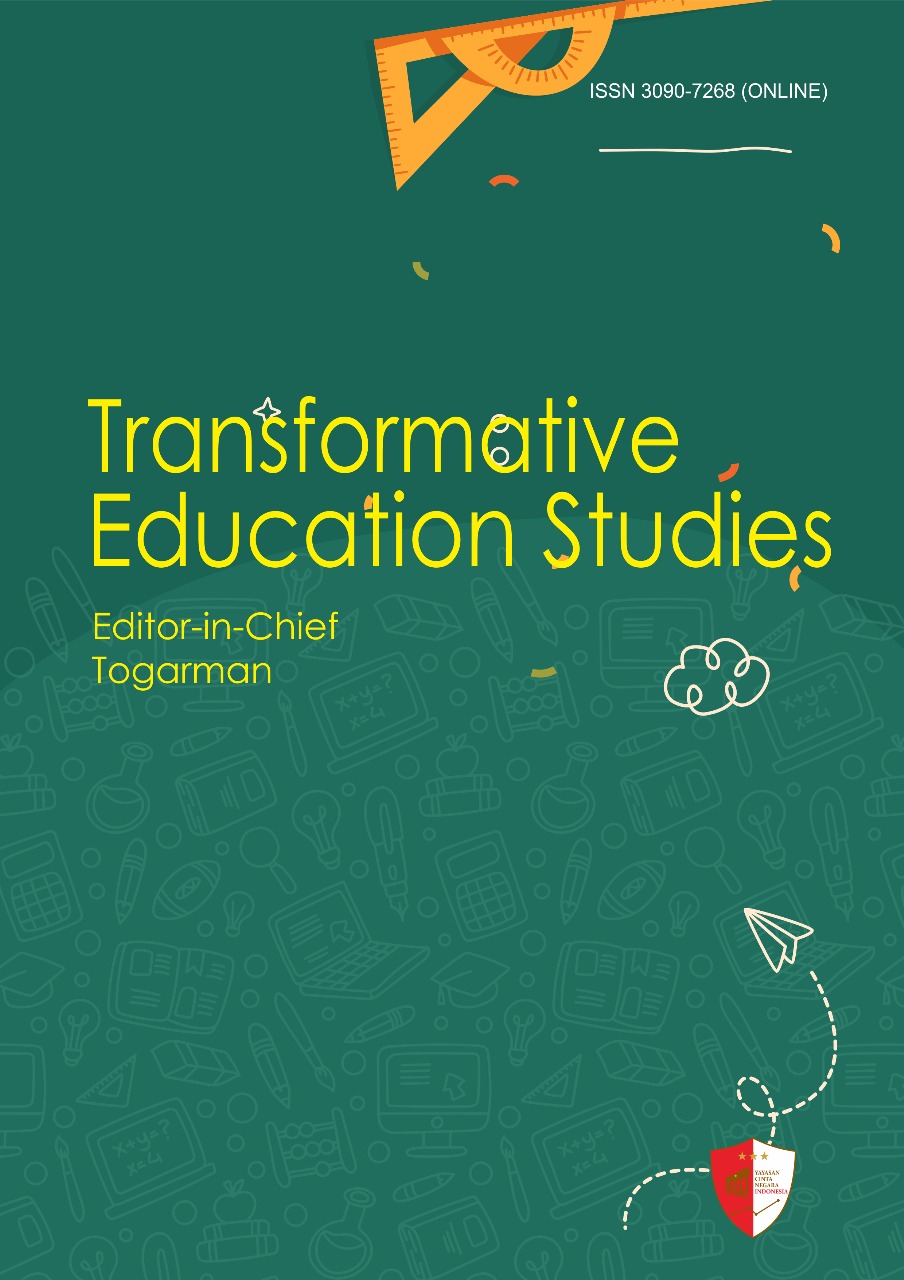The Role of Demonstration Strategy in Improving Student Learning Performance
Keywords:
Active Learning, Demonstration Strategy, Learning Performance, Student Achievement, Teaching MethodAbstract
The purpose of learning activities in the classroom, as explained by Mager, is to focus attention on student behavior or performance as a form of observable output and an indicator that students have followed the learning process. Based on the results of this study, the alternative hypothesis formulated can be accepted, so it can be concluded that the demonstration method applied in learning has a real influence. This method is proven to be effective and feasible to use as one of the approaches that can increase student activeness in the learning process. As one of the alternative learning methods, demonstration provides opportunities for students to be more active, think critically, and expand their learning experience, especially when they are asked to practice the material they have understood. Therefore, the use of demonstration methods in the classroo m can support the improvement of students' understanding and skills more thoroughly
References
Abrahams, I., & Millar, R. (2008). Does practical work really work? A study of the effectiveness of practical work as a teaching and learning method in school science. International Journal of Science Education, 30(14), 1945–1969. https://doi.org/10.1080/09500690701749305
Adeyemo, S. A. (2010). The effect of teachers’ perception and students’ perception on the implementation of demonstration method in science classrooms. Educational Research and Reviews, 5(7), 354–362.
Agboola, A. F., & Oloyede, E. O. (2007). Effects of teaching methods on students’ academic performance. African Research Review, 1(1), 67–74.
Akpan, E. U., & Beard, R. M. (2016). Demonstration and student performance in science practical. Journal of Educational Research, 19(2), 121–129.
Aloraini, S. (2012). The impact of using multimedia on students’ academic achievement in the College of Education at King Saud University. Journal of King Saud University - Languages and Translation, 24(2), 75–82.
Amosa, I. A., & Aliyu, M. M. (2017). Effect of demonstration method on secondary school students’ academic performance in biology. Journal of Science Teachers Association of Nigeria, 52(1), 109–118.
Asikhia, O. A. (2010). Students and teachers’ perception of the causes of poor academic performance in Ogun State Secondary Schools, Nigeria: Implications for counselling for national development. European Journal of Social Sciences, 13(2), 229–242.
Ayres, P., & Paas, F. (2007). Making instructional animations more effective: Reducing extraneous cognitive load. Applied Cognitive Psychology, 21(6), 695–700.
Bandura, A. (1977). Social Learning Theory. Englewood Cliffs, NJ: Prentice Hall.
Bello, I. A. (2014). Effect of demonstration teaching strategy on students’ academic achievement in agricultural science. Journal of Education and Practice, 5(7), 222–228.
Biggs, J., & Tang, C. (2011). Teaching for Quality Learning at University (4th ed.). McGraw-Hill Education.
Bloom, B. S. (1956). Taxonomy of Educational Objectives: The Classification of Educational Goals. Longmans.
Bruner, J. S. (1961). The act of discovery. Harvard Educational Review, 31(1), 21–32.
Bybee, R. W. (2013). The BSCS 5E instructional model: Creating teachable moments. NSTA Press
Chambers, E. A., & Abrami, P. C. (1991). The effects of open and closed learning environments on the academic achievement of high ability students. Educational Technology Research and Development, 39(1), 23–29.
Eggen, P., & Kauchak, D. (2012). Strategies and Models for Teachers: Teaching Content and Thinking Skills (6th ed.). Pearson Education.
Eick, C. J., & Stewart, B. (2010). Disciplinary Coherence in High School Science Teaching: A Case Study of Integrated Earth Science. Science Education, 94(5), 849–873.
Ezeudu, F. O., & Obi, T. N. (2013). Effect of demonstration method on students’ achievement in physics. Journal of Science Education, 5(2), 45–52.
Gagne, R. M., Briggs, L. J., & Wager, W. W. (1992). Principles of Instructional Design (4th ed.). Holt, Rinehart and Winston.
Hake, R. R. (1998). Interactive-engagement versus traditional methods: A six-thousand-student survey of mechanics test data for introductory physics courses. American Journal of Physics, 66(1), 64–74.
Harden, R. M., & Crosby, J. R. (2000). AMEE Guide No 20: The good teacher is more than a lecturer—the twelve roles of the teacher. Medical Teacher, 22(4), 334–347.
Hofstein, A., & Lunetta, V. N. (2004). The laboratory in science education: Foundations for the twenty-first century. Science Education, 88(1), 28–54.
Johnson, D. W., Johnson, R. T., & Smith, K. A. (2014). Cooperative learning: Improving university instruction by basing practice on validated theory. Journal on Excellence in College Teaching, 25(4), 85–118.
Joyce, B., Weil, M., & Calhoun, E. (2015). Models of Teaching (9th ed.). Pearson Education.
Khan, S. B. (2012). The teaching strategy of demonstration and its effect on the academic achievement of students in the subject of Home Economics at secondary level. International Journal of Education and Research, 1(9), 1–10.
Kirschner, P. A., Sweller, J., & Clark, R. E. (2006). Why minimal guidance during instruction does not work: An analysis of the failure of constructivist, discovery, problem-based, experiential, and inquiry-based teaching. Educational Psychologist, 41(2), 75–86.
Kolb, D. A. (1984). Experiential Learning: Experience as the Source of Learning and Development. Prentice Hall.
Mayer, R. E. (2009). Multimedia Learning (2nd ed.). Cambridge University Press.
McKeachie, W. J., & Svinicki, M. (2013). McKeachie's Teaching Tips: Strategies, Research, and Theory for College and University Teachers (14th ed.). Cengage Learning.
Downloads
Published
Issue
Section
License
Copyright (c) 2025 Aransa Napitupulu (Author)

This work is licensed under a Creative Commons Attribution-NonCommercial 4.0 International License.





